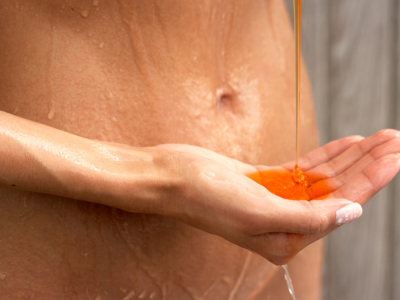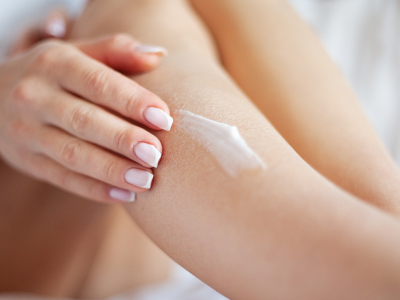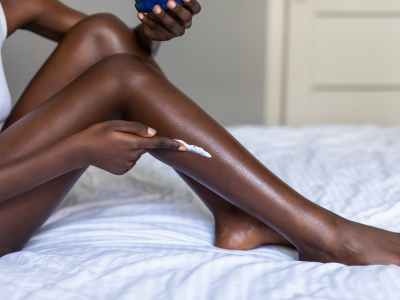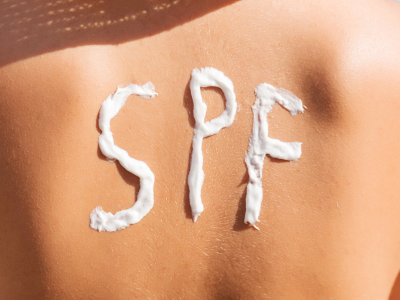Your Client’s Essential Guide to Post-Waxing Skin Care
You’ve just finished waxing your client and their results are fantastic!
However, before they leave, it's important to give your client instructions on how to best care for their skin so that they can maintain smooth, flawless skin.
In this article you will learn:
- Why proper hygiene at home is so important.
- A list of what your clients should avoid after being waxed.
- Find out the main reasons why your client is breaking out and how to minimize the risks of it.
When you wax, it affects the client's skin. Our hair, especially pubic hair, serves as a protective barrier for the sensitive skin and internal areas around our genitals.
However, when you wax any part of the body, tiny bits of the top layer of skin are removed. This can cause inflammation and make it easier for bacteria to get trapped under the skin, which can lead to infections.
It's important to learn about proper care after waxing to reduce the risk of bacterial growth and prevent skin infections, including staph infections, folliculitis (an infection of the hair follicles), and painful ingrown hairs.
Fortunately, most side effects from waxing can be easily prevented. Even if your client experiences issues during or after a waxing session, these are typically quick and simple to manage.
That is why proper home post-care is essential to ensuring your client's skin health and minimize any discomfort or adverse reactions.
Let’s explore key components that will keep your client’s skin happy and healthy.
Post Wax Cleansing
Cleansing the skin helps to remove any residual wax, oil, or debris that may exacerbate irritation.
Encourage your clients to wash the area that has been waxed with a gentle cleanser to remove any dirt, oils, or sweat and pat the skin dry gently to avoid friction.
They will want to avoid using harsh soaps or cleansers that could possibly irritate the skin. Since waxing removes hair from the follicles, it can leave the skin temporarily vulnerable to bacteria and other pathogens.
By keeping the area clean, it will help reduce the risk of infection by removing it that may enter the open hair follicles.

Exfoliate
Exfoliating regularly can help prevent ingrown hairs by keeping hair follicles clear of dead skin cells and debris; therefore, allowing aftercare products to penetrate more effectively into the deeper layers of the skin.
This is particularly beneficial for areas that are prone to ingrown hairs, such as the face, bikini area, legs, and underarms.
It is recommended that your clients exfoliate the waxed area 2-3 times a week to prevent ingrown hairs. There are two options for exfoliating: chemical or manual exfoliants. Dermwax's Elite Ingrown Hair Solution is a chemical exfoliant that contains active ingredients: Lactic Acid, Glycolic Acid and Arnica.
These ingredients help slough off dead skin cells that accumulate on the surface of the skin, minimize hyperpigmentation, and soothes the skin.
Spa Order’s Exfoliating Massage Gloves are manual exfoliators that fit over your client’s hands like a pair of cozy winter mitts.

Moisturize
Waxing can strip the skin of its natural oils, leaving it dry and dehydrated. Moisturizing helps maintain the skin's natural barrier function, replenish lost moisture, keep the skin hydrated, prevent dryness and flakiness while keeping the skin soft and supple. Healthy, moisturized skin is less prone to irritation, infections, and other skin issues, promoting overall skin health and vitality.
If your client’s skin is dry or flaky, it can contribute to the formation of ingrown hairs by blocking hair follicles.
Moisturizers with soothing properties like aloe vera or calendula oil can help calm the skin, reduce redness, and alleviate discomfort and irritation.

Calendula Oil
If your client’s skin feels irritated or is red after waxing, they should apply a soothing aftercare product such as Dermwax Calendula Oil.
Calendula oil is hydrating and emollient, making it an excellent moisturizer for dry or dehydrated skin which are issues commonly associated with waxing. Calendula contains properties that calm the skin, is anti-inflammatory, reduces redness and discomfort, and provides relief to sensitive skin.
It also contains compounds such as flavonoids and saponins that help speed up the recovery process for waxed skin by supporting tissue repair and regeneration.
By applying the oil, your client creates a protective barrier on the skin, reducing the risk of bacteria entering hair follicles, causing folliculitis or other skin infections.

Stay Dry
Your client will want to keep the waxed area as dry as possible. By keeping the area dry, they reduce the likelihood of bacterial growth and subsequent infections.
If they do, it will create an optimal environment for the skin to repair itself, minimizing redness, swelling, and inflammation.
If the treated area does not stay as dry as possible, it can cause a sensation of stickiness or dampness, leading to discomfort and irritation which can potentially prolong the recovery process.
Don’t Touch
If your client touches their freshly waxed skin, it can introduce bacteria, dirt, and oils from their hands onto the sensitive skin, leading to irritation, redness, folliculitis, or other skin infections.
Rubbing or scratching the area can cause the waxed area, compromising the smoothness and longevity of the results.
In addition, touching freshly waxed skin can disrupt the hair follicles and hinder the proper regrowth of hair by breaking or becoming displaced.
This disruption can increase the likelihood for them to become trapped beneath the skin's surface leading to ingrown hairs.

Avoid Sun Exposure
After waxing, the skin may be more sensitive and prone to sunburn due to temporary inflammation and increased vulnerability.
Sun exposure can exacerbate post-inflammatory hyperpigmentation, leading to the darkening of areas where the skin has been waxed. Clients will want to protect the waxed area from direct sunlight for at least 24-48 hours after waxing to prevent sunburn and irritation.
They will need to apply sunscreen with SPF 30 or higher if sun exposure cannot be avoided. SPF helps protect the skin from harmful UV radiation and reduces the risk of sunburn.

No Heat
Exposing waxed areas to heat sources such as hot water, saunas, or steam rooms can cause irritation, infections, folliculitis, increase discomfort and prolong the recovery period.
Waxed skin should avoid direct contact with hot surfaces or high temperatures because it can burn or blister, leading to pain, discomfort, and potential skin damage.
Heat can also exacerbate post-waxing inflammation, redness, sensitivity, and making it more susceptible to burns from heat sources. Heat opens the pores and hair follicles, making them more vulnerable to bacteria and infections.
Heat can also stimulate sweat production, leading to increased moisture and friction on waxed skin.
This can exacerbate irritation, increase the risk of ingrown hairs, and compromise the effectiveness of the waxing treatment.
Avoid Tight Clothing
Your clients will want to avoid wearing tight clothing that could rub against the waxed area and cause irritation or ingrown hairs.
Friction can exacerbate post-waxing redness, inflammation, and sensitivity, leading to discomfort and potential skin damage. Tight clothing restricts airflow to the skin, preventing proper ventilation and hindering the skin's ability to breathe.
If the skin cannot breathe, it can exacerbate post-waxing irritation and delay the healing process by trapping sweat, bacteria, and other impurities against the skin.
Moreover, the pressure from tight clothing can also obstruct hair follicles, increasing the likelihood of hairs becoming trapped beneath the skin's surface and leading to ingrown hairs.

Stay Hydrated
Hydration is crucial for skin regeneration and repair.
After waxing, the skin may experience temporary redness, dryness, inflammation, and sensitivity because the wax can strip the skin of its natural oils.
Drinking an adequate amount of water helps hydrate the skin from within, promoting faster healing and reducing the duration of post-waxing symptoms. Hydrated skin is less prone to irritation and discomfort, enhancing the overall waxing experience.
Drinking plenty of water supports the body's natural detoxification mechanisms, aiding in the removal of waste products and reducing the risk of skin congestion and breakouts.
Furthermore, hydration plays a role in hair growth and follicle health. Drinking enough water ensures that hair follicles receive proper nourishment and hydration, promoting healthy hair growth.

In conclusion, following these post-waxing care steps diligently can help ensure optimal results, minimize discomfort, and reduce the risk of complications, leaving the skin smooth, healthy, and radiant.
-Written by Kyla Sampson, 2024




